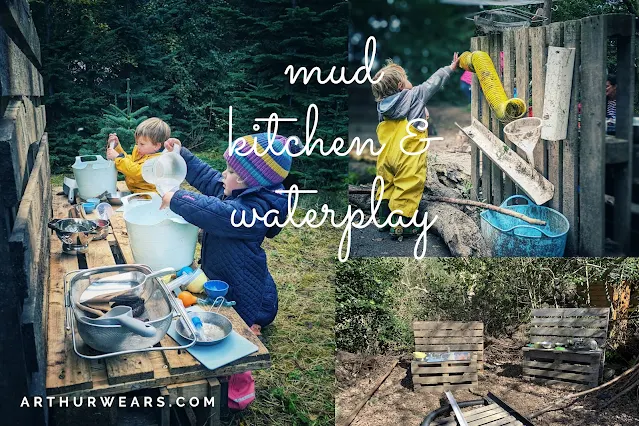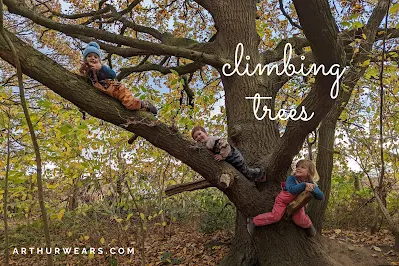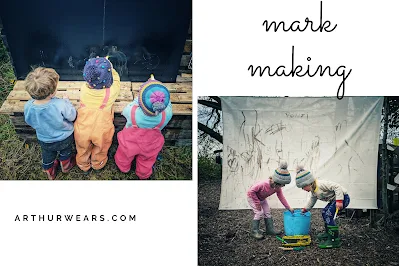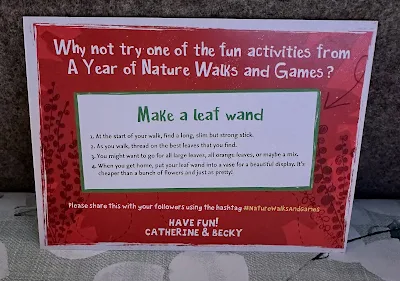This post is here to answer all of your Forest School questions, we’ve got some fab book recommendations to get you started and information from our very own Forest School expert – Kim Jarvis from Wirral Wildlings Forest School.
What is Forest School?
As a parent, you're always seeking the best opportunities for your child's growth and development. One educational approach gaining popularity in recent years is "Forest School." But what exactly is Forest School, and how can it benefit your young explorer?
Defining Forest School:
Forest School is a nature-based educational philosophy that places a strong emphasis on outdoor learning in natural environments, typically woodlands or forests. Unlike traditional classroom settings, Forest School encourages children to immerse themselves in the wonders of the natural world. It's an educational approach that celebrates curiosity, exploration, and hands-on experiences amidst the beauty of the great outdoors.
Key Features of Forest School:
Outdoor Learning: At the heart of Forest School is the idea that children learn best when they are actively engaged with their environment. This means classes are held outdoors, regardless of the weather, allowing kids to connect with nature throughout the seasons. You can read more on the benefits of outdoor play here.
Child-Led Exploration: Forest School promotes child-led learning, where youngsters have the freedom to choose their activities, explore their interests, and set their own pace. This approach fosters independence and self-confidence.
Hands-On Experiences: Rather than textbooks and lectures, Forest School relies on practical experiences. Children may build shelters, identify local flora and fauna, play games, or create art using natural materials. These activities not only enhance their knowledge but also develop essential life skills.
Holistic Development: Forest School recognizes that learning extends beyond academics. It focuses on the holistic development of children, encompassing physical, emotional, and social growth. It's a place where resilience, problem-solving, and teamwork thrive within nature play.
The benefits of Forest School:
Why Consider Forest School for Your Child?
Connection with Nature: In an increasingly digital world, Forest School reconnects children with the natural world, fostering a deep appreciation for the environment.
Enhanced Creativity: Outdoor play and exploration stimulate creativity and imagination, helping children think outside the box.
Improved Physical Health: Forest School promotes physical activity, improving overall health and well-being.
Boosted Confidence: Encouraging independence and self-discovery instils a sense of confidence and self-worth in your child.
Strong Sense of Community: Forest School often nurtures strong friendships and a sense of belonging among children.
By introducing your child to the wonders of Forest School, you're providing them with a unique and enriching educational experience that can have a lasting positive impact
How to create a Forest School at home:
If you are unable to find a suitable Forest School near you, then creating a Forest School experience right in the comfort of your home can be an incredibly rewarding venture for both you and your child. Here are some steps to help you set up your very own Forest School at home.
1. Find the Perfect Outdoor Space:
Start by identifying a suitable outdoor area, such as your garden or a nearby park. Ensure it's safe and allows for exploration while being in touch with nature. The key is to provide a natural environment that encourages curiosity and discovery. Planting a variety of flower seeds is a simple and rewarding way to introduce children to the joys of gardening while teaching them about growth and seasonal changes.
2. Safety First:
Safety is paramount. Make sure the area is free of hazards, like sharp objects or toxic plants. Set boundaries and rules to ensure your child's well-being while exploring.
3. Gather Essential Supplies:
Equip your Forest School with essential tools like magnifying glasses, binoculars, field guides, and basic first aid supplies. These items will aid in hands-on learning and safety.
4. Plan Engaging Activities:
Craft a list of outdoor activities that align with your child's interests and developmental stage. Nature scavenger hunts, bird watching, leaf art, and bug investigations are just a few ideas to get you started. More on this below!
5. Embrace Unstructured Play:
Forest School values unstructured playtime, so don't over-organize. Allow your child to follow their curiosity and create their adventures, fostering independence and creativity.
6. Document the Journey:
Consider keeping a nature journal or a photo album to document your Forest School experiences. This not only helps your child reflect on their discoveries but also creates lasting memories.
7. Invite Others to Join:
Share your Forest School journey with friends or other parents who may be interested. Building a small community can enhance the experience for everyone involved.
8. Incorporate Seasonal Changes:
Adapt your activities to the seasons. Explore changing foliage in the fall, snowy adventures in the winter, and budding life in the spring. Embracing these seasonal shifts enhances the learning experience.
By following these steps, you can set up a rewarding Forest School experience at home, providing your child with an opportunity to connect with nature, learn through exploration, and develop a deep appreciation for the world around them. It's a unique and enriching educational adventure that can foster a lifelong love for the outdoors.
Forest School Activities and ideas:
Mud Kitchen: If you are lucky enough to have a permanent place to undertake forest school activities, then one of the best resources to aid in learning and development outdoors is a mud kitchen. If you are not able to have a permanent fixture, then there are also ways that you can create a mud kitchen experience using smaller tools and items. Have a look at this blog post on Mud Kitchen activities, ideas and accessories for a more in depth look at mud kitchens and their benefits and how to utilise this resource effectively.
Some more permanent fixtures and activities from which the children will benefit include:
- Shelter – for particularly wet or windy days, somewhere to shelter for mealtimes or rest is an important addition.
- Fire pit – for toasting marshmallows at the end of a session, campfire songs, learning about fire safety and enjoying a hot chocolate on a cold day.
- Trees – a staple feature within a forest school, trees are utilised in many ways, including to hide behind, play around, touch/feel/notice differences and changes, tree rubbings, listening to sap, hanging swings and hammocks.
- Hammock – perfect for relaxing or listening to nature sounds, and cloud watching
- Swings – as well as a sensory experience, swings also help with gross motor skills, upper body strength and balance.
- Climbing apparatus – important for building up chest and arm muscles, developing balance and learning to take risks safely
- Music wall – this can be as simple as having old pots and pans against a wall or palette for children to explore making different sounds using sticks, spoons and natural objects
- Stage – an old palette, perhaps covered in faux grass, can make a brilliant stage for children to demonstrate their skills, practise story telling or to help themselves to be heard.
- Mark making area – having a large, outdoor chalk board is a perfect addition for large scale mark making in an outdoor setting which can be reused again and again. An old sheet can also be strung up and painted on using mud paints made from nature.
- Water play – having containers of water and pipes, runways and pots/utensils for water play
- A nature abacus for counting – This can be made using string and log slices ties between two trees or branches, at child height for children to use independently.
- Hand washing facilities – with the absence of sinks and taps in most forest school settings, making a hand washing station where fresh water can be dispensed is an important addition to a setting where children will play and get dirty often.
- Outdoor toilet tent if ‘wild wees’ are not an option – although wild wees are the norm in most settings, for privacy of children and parents, setting up a toilet tent which contains either a bucket or an outdoor toilet will help to teach children about appropriate toilet practise.
Some activity ideas which can be undertaken in both permanent and flexible forest school settings:
- Whittling
- Sawing
- Hammering
- Palm drilling
- Balancing
- Making nature crowns
- Nature Weaving
- Boat-making
- Den building
- Parachute play
- Mud slides
- Making bird feeders
- Hapa zome
- Making journey sticks or wands
- Make a bug hotel
- Stick hearts
- Ice sun catchers
Resources, tools and accessories for Forest school:
- Clipboards and paper
- Writing and mark making utensils
- Wheelbarrows
- Containers for carrying and transporting
- Spades and spoons for digging
- Chalk boards and material for mark making
- String and wool
- Den building equipment
- Containers for filling, emptying and pouring
- Balls
- Guttering and pipes
- Rakes
- Pipecleaners
- Logs and planks of wood
- Scrap materials
- Saws and hammers
- Peelers and whittling tools
- scissors
If you're looking for more activities and ideas for Forest School, then check out this book by fellow blogger, Becky Goddard-Hill which is full of nature walks and games ideas:
The book has lots of ideas such as this 'make a leaf wand' postcard activity idea:
The real forest school ethos
Kim Jarvis from Wirral Wildlings explains…
The full Forest School is usually a minimum of 6 x 2 hours sessions with structured skills that develop over the course of the sessions. As a Forest School ourselves, we are a bit of a hybrid and believe that our setting is better suited for young children as it is more child-led… Parent and child sessions are shorter than 2 hours to accommodate tired toddlers. Kindergarten and home ed days are all day to allow exploration, building independence and confidence and friendships.
The key is to use nature as much as possible. We add extra early resources like phonics and numbers/letters in as a provocation, we always have string for practising knots, tools and fires are a big part of Forest School too. We teach safe tool use and fire safety from a young age and practise it regularly. We teach how to select a safe tree and climb safely. What plants they should/not touch, what hazards to be aware of in nature, how the seasons, weather etc work. Children learn how to look after themselves, to be aware of body temperature, clothing, eating, energy levels, wildlife, kindness, protecting the environment, being kind and helpful friends, mentoring little ones. There are so many benefits (Not to mention their immune system). The statistics for benefits of being in woodland are astonishing. Increased Oxygen and gut microbiome levels, better mental well-being, calms ADHD and similar minds and allows children to connect with their bodies and become strong and able.
You can find out more about Wirral Wildlings and what they have to offer here: www.wirralwildlings.co.uk
Can older children go to Forest School?
Absolutely, older children can attend Forest School programs as well. While Forest School principles are often associated with early childhood education, the concept can be adapted to cater to older age groups, including high school students. Here's how Forest School can benefit older children:
Deeper Exploration: Older children can delve into more complex topics and engage in advanced outdoor activities. They can explore topics like ecology, wildlife biology, and environmental science in greater depth.
Enhanced Skill Development: Forest School can help older children refine their outdoor and survival skills, including fire-building, shelter construction, and navigation. These skills can be valuable for personal growth and future outdoor adventures.
Leadership and Teamwork: Forest School can incorporate leadership and teamwork activities that challenge older students to take on leadership roles, collaborate effectively, and mentor younger participants.
Nature Conservation: Older children can learn about the importance of conservation and environmental stewardship. They can engage in projects like trail maintenance, habitat restoration, and wildlife monitoring.
Experiential Learning: Forest School provides older students with hands-on, experiential learning opportunities that may not be available in traditional classroom settings. This approach can deepen their understanding of ecological concepts and foster a lifelong love for the outdoors.
Personal Growth: The independence and self-reliance promoted by Forest School can be especially beneficial for older children as they prepare for the challenges of adolescence and adulthood. It can boost their confidence and resilience.
Alternative Education: Forest School can serve as an alternative educational model for older children who may struggle in traditional classroom environments. It provides a unique and engaging way to learn.
When considering Forest School programs for older children, it's essential to look for programs or organizations that cater to their specific age group and interests. These programs may offer more advanced activities to suit the developmental needs of older participants. Additionally, parents and educators can collaborate to create Forest School experiences tailored to the interests and goals of older children.

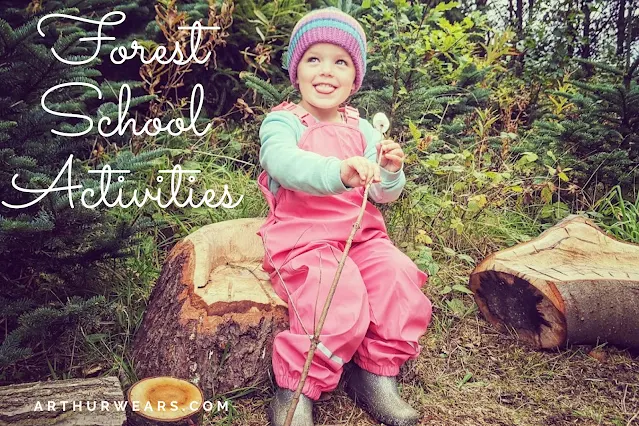


.jpeg)
